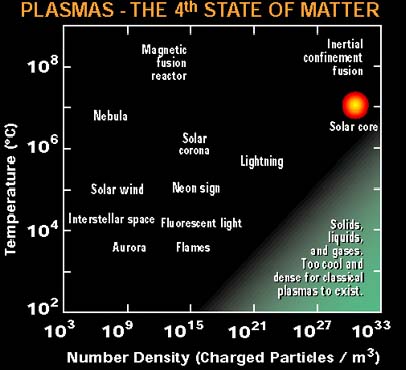|
Plasma is considered the fourth state of matter,
the first three being liquid, solid, and gas. For matter to reach this state
it first has to be in a gas form, which is then stimulated in some way that
causes the electrons to detach from the atom, leaving the atom ionized.
"Without ionization it would be impossible to obtain plasma" (Kamenetskii
35). Ionization of a gas can form in three ways: heat, radiation, and electrical
discharge. An example of ionization by electrical discharge is lightning.
When the lightning strikes it separates the electrons from the air molecules
which create plasma for a short period of time. Heat ionization is created
in the sun. This occurs when a particle is heated to the point that it is
close to the energy of the weakest bound electron. When the electron bond
energy is equal to the heat of the atom the electron is no longer attracted
to the atom and is pushed away, creating an ionized particle. Ionization
in a fusion reaction is important because with the electrons detached from
the atoms the plasma has an electrical charge, leaving them highly reactive
to magnetic stimulation. |
|
 |


